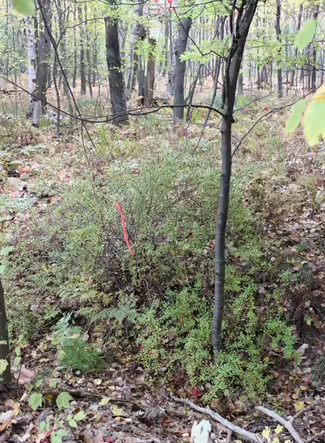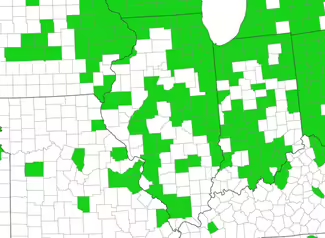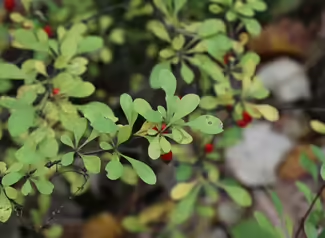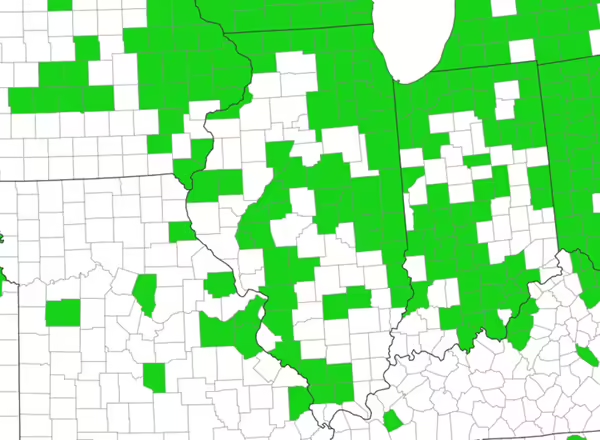
Invasive Japanese Barberry
This species outcompetes and displaces native vegetation. Japanese barberry, Berberis thunbergii, invades a variety of habitats ranging from roadsides and open fields to forests and wetlands and can persist under dense forest canopies. Japanese barberry spreads rhizomatously as well as by arching branches that root where they touch the ground to form dense thickets. In addition, the abundant fruits are consumed and dispersed by birds to new areas. The foliage of Japanese barberry is also avoided by deer so may lead to even greater abundance in invaded areas that coincide with areas with high deer occurrence.

Japanese barberry is native to eastern Asia and was first introduced to the United States in 1864 as an ornamental. This species continues to be used as an ornamental in many states including Illinois despite its reputation as an invasive species. It is sold under a variety names – ‘Angel Wings,’ ‘Pow Wow,’ ‘Silver Mile,’ and many others. Consumers should check scientific names on labels of any species they are considering purchasing for their landscaping. In this case, if the label says the scientific name Berberis thunbergii, then it is the invasive Japanese Barberry and should be avoided.
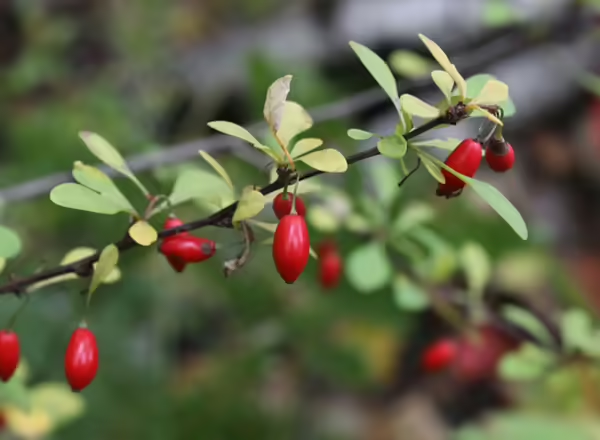
Japanese barberry is not regulated or listed in Illinois. It is regulated in Maine, Maryland, Massachusetts, Minnesota, New Hampshire, New York, Vermont, and Wisconsin. In addition, it is also on several state lists of known invasive species including Alabama, Connecticut, Delaware, Georgia, Indiana, Kentucky, Massachusetts, Pennsylvania, New Hampshire, New Jersey, South Carolina, Virginia, West Virginia, and Wisconsin.
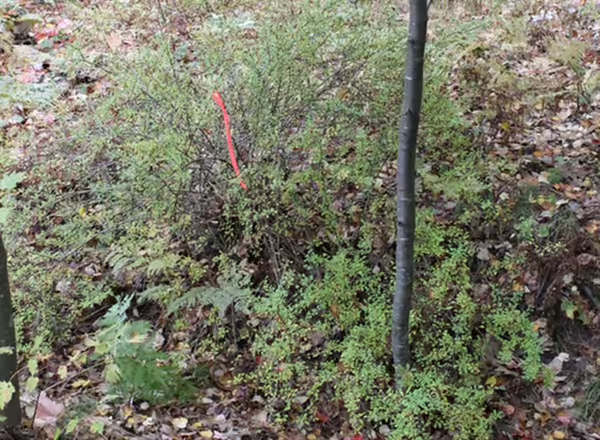
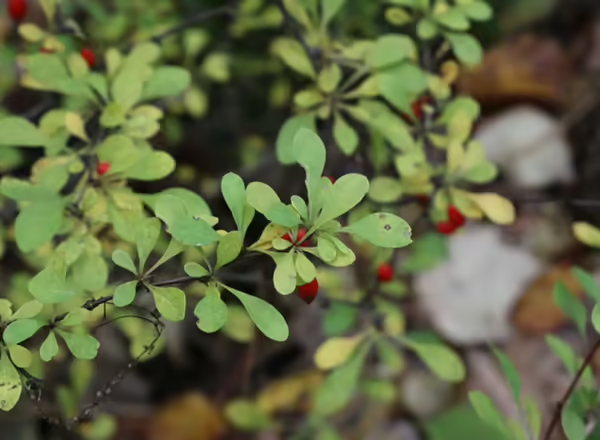
Consider planting these ornamental alternatives to Japanese barberry:
- Inkberry holly (Ilex glabra): A delightful evergreen shrub that can be used as a hedge, in landscape beds, or screening. These plants are fire-adapted and will regrow if cut to the base.
- Red chokeberry (Aronia arbutifolia): Red chokeberry has bright autumn leaves and a profusion of white spring flowers followed by the development of red berries that persist into the winter.
- Winterberry holly (Ilex verticillata): Winterberry is a deciduous holly hardy to zone 3. Red berries begin their display in September and can last for several months. Cultivars vary in height from 5 to 10 feet. This species is a good selection for shrub borders or screening.
- Gray Dogwood (Cornus racemosa): A shrub that offers spring blooms and white fruit. It also has a noteworthy fall color of deep red to purple. Adaptable to full sun or part shade this shrub also does well in soil with normal to higher moisture conditions.
- Virginia Sweetspire (Itea virginica): A shrub native to the southernmost counties of Illinois, you can find it planted and sold throughout the state. The most common cultivar is ‘Henry’s Garnet’. Known for bottlebrush-shaped, white spring flowers, and outstanding fall color, this shrub stands up well to wet soils.
- Dwarf Fothergilla (Fothergilla gardenii): Dwarf fothergilla has some noteworthy cultivars that emphasize fall color, spring bloom, and leaf color. ‘Blue Shadow’ leaves stand out with a bluish hue. Meanwhile ‘Mt. Airy’ has outstanding red to maroon fall color, with other cultivars sporting orange or yellow fall color.
- Mechanical: Small- to medium-sized plants can be hand-pulled fairly easily; be careful of the thorns. Larger plants can be dug or removed with the aid of a grubbing tool. Repeated cuttings can weaken plants and reduce seed production but will not eradicate plants.
- Cultural: Prescribed fire is effective at killing seedlings and top-killing established plants. Repeated burns may reduce population size. Burning the base of barberry plants with a propane torch has been shown to be an effective method of control. Hold the flame on the plant base for 15 to 20 seconds.
- Chemical: Always read and follow the herbicide label before initiating treatment. If seeds are present on the plant, take care not to spread them during control.
- Foliar: Apply 1 to 2% volume-to-volume, v/v, glyphosate in water or 1% to 2% v/v triclopyr amine in water as foliar spray. The most effective time of application is just before flowering. Alternatively, plants can be cut or mowed and allowed to sprout and regrow to 18 inches tall before applying foliar treatment.
- Basal bark: Apply a triclopyr ester formulation at a 20% to 30% v/v rate, mixed with basal oil, to the lowest 15 inches of the stem. Basal bark is not as effective as cut stump for Japanese barberry.
- Cut stump: Apply glyphosate at a 25% to 50% v/v rate in water or triclopyr amine in water or ester in oil at a 20% to 25% v/v rate within 10 minutes of cutting.
University of Illinois horticulture educator Kelly Allsup will discuss some of the most common landscape plants with potentially invasive qualities in the natural areas and replace them with native alternatives that are just as attractive.
Japanese barberry is a conspicuous small deciduous shrub of 2 to 6 feet tall with paddle-shaped simple leaves around 1 inch long in an alternate leaf arrangement. It also has numerous thin spines on its grooved branches and fruits that are around ¼ inch long and bright red at maturity. Leaves turn red in the fall.
